Reducing Lead and Cadmium Health Risks in Rudnaya River Valley, Primorye, Russia
Project dates: 2007-2010
Number of people at risk: 40,000
Source of pollution/pollutants: Mining and smelting; lead, cadmium, arsenic
Project implementers: Far Eastern Environmental Health Fund (FEHF) in cooperation with Terragraphics Environmental Engineering
Total cost: $500,000, the project was funded by Green Cross Switzerland.
The project was implemented in 2007-2010 with financial and organizational support of Blacksmith Institute and Terragraphics.Project dates: 2007-2010Number of people at risk: 40,000Source of pollution/pollutants: Mining and smelting; lead, cadmium, arsenicProject implementers: Far Eastern Environmental Health Fund (FEHF) in cooperation with Terragraphics Environmental Engineering Total cost: $500,000, the project was funded by Green Cross Switzerland.
Site description
Lead has thousands of uses in modern human life. In order to satisfy the growing demand for the metal, enormous amounts are produced every year. As a result, lead pollution and accumulation in the environment threaten both human health and the environment. It becomes a serious problem in areas where lead is mined and processed. Dalnegorsky District is a good example of such area with severe problems of lead poisoning of children.
Dalnegorsk District is located in the Russian Far East in the north-eastern part of Primorye region, about 400 km northeast of Vladivostok. This area is very rich in mineral deposits and relatively densely populated. During the Soviet era, Dalnegorsky District was developed as an industrial mining area because it has one of the richest mineral deposits in the Far East. The government built numerous mines, plants, and smelters. During that era, little consideration was given to health risks associated with industrial pollution. It was a common practice to build residential areas in the immediate vicinity of the industrial sites. Therefore, the industrial pollution accumulated in and near the people’s houses and put residents at risk of poisoning. After 100 years of the work of mining and smelting industry the valley of the Rudnaya River became ubiquitously contaminated with lead, cadmium, arsenic, zinc, copper, and other heavy metals.
The lead and zinc ore is mined in the city of Dalnegorsk, the district capital with population about 45,000 people. The ore from the mine is transported by a railway to the refining plant in Dalnegorsk. Then the lead and zinc concentrate used to be transported to the town Rudnaya Pristan for smelting. The population of Rudnaya Pristan is about 5,000 people including nearby villages.
In 2005 smelting of lead concentrate in coastal town Rudnaya Pristan was stopped, which significantly improved the air quality. But the issue of lead poisoning risk was not solved because the soils were still highly contaminated. The average concentration of the main contaminant lead in soils within 1 kilometer from the smelter was over 2,200 ppm, which is more the 4 times higher than the USEPA lowest cleanup trigger level (400 ppm).

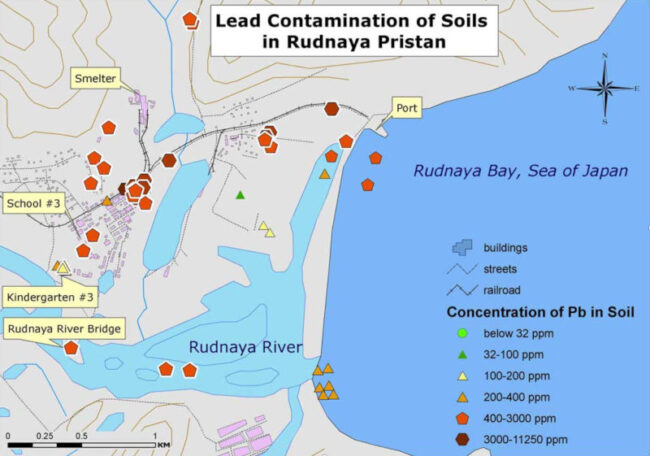
Environmental monitoring
In 2007-2009 the project team conducted a study of contamination of soils of the Rudnaya River Valley. The soil was sampled mainly in places where children may play: playgrounds of kindergartens and yards, sport yards of schools, railroad area and beaches. Some samples were taken from the bottom of the Rudnaya River, Vaskovskoe Lake, and the sea near coast. The main criterion in sampling was the likelihood of contact of children with contaminated soil, sand or bottom sediment.
The results of the study indicated:
- the area of the former industrial railroad connecting Dalengorsk and Rudnaya Pristan is the most contaminated are and must be cleaned up
- the tailings should be adequately maintained in order to prevent further distribution of dry dust
- the crops from the gardens may be unsafe and should be analyzed for heavy metals
- the gardens to the south of tailings should not be used for agricultural purposes
The collected data allowed identifying and prioritizing sites for cleanup and draw maps of contaminated areas.


Cleanup of Contaminated Soils
In 2007-2009 the project team cleaned up 8 playgrounds of different sizes and total area over 17,840 sq. m. The most contaminated top soil layer was removed and transported to the tailings. Then clean soil and sand were brought in.
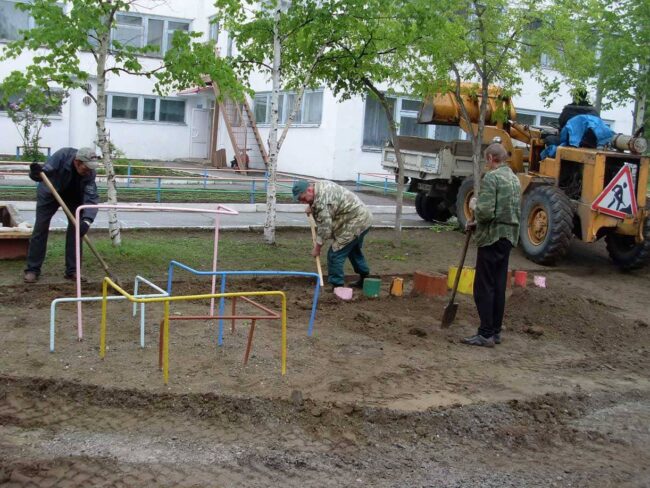
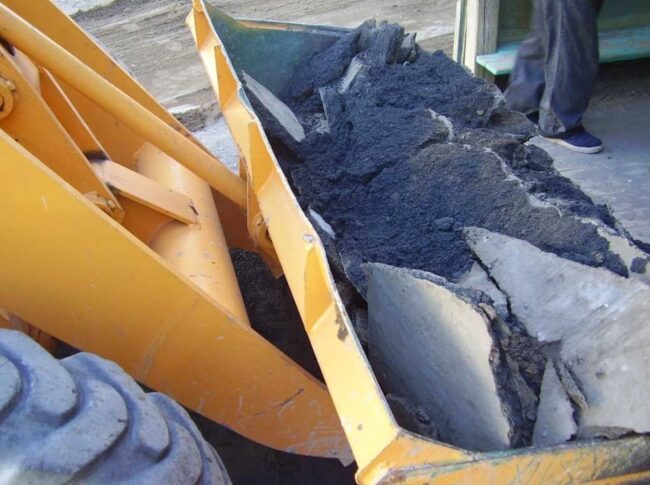
Education and awareness
The project team conducted awareness efforts included personal work with families, special classes with children, distribution of information through local media, and printing special brochures, books, and information sheets. A special “Lesson about Lead” was developed and now is used in schools in the district. At the workshops for teachers of schools and kindergartens FEHF specialists described the activities of the ongoing project and explained how to conduct the specially developed by FEHF classes on lead health with children.
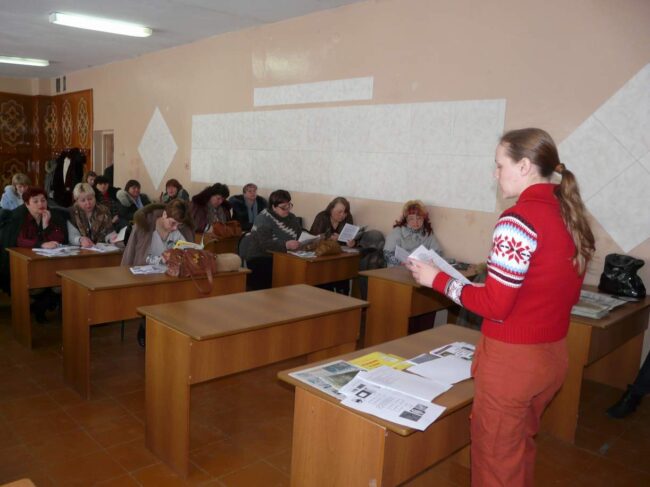
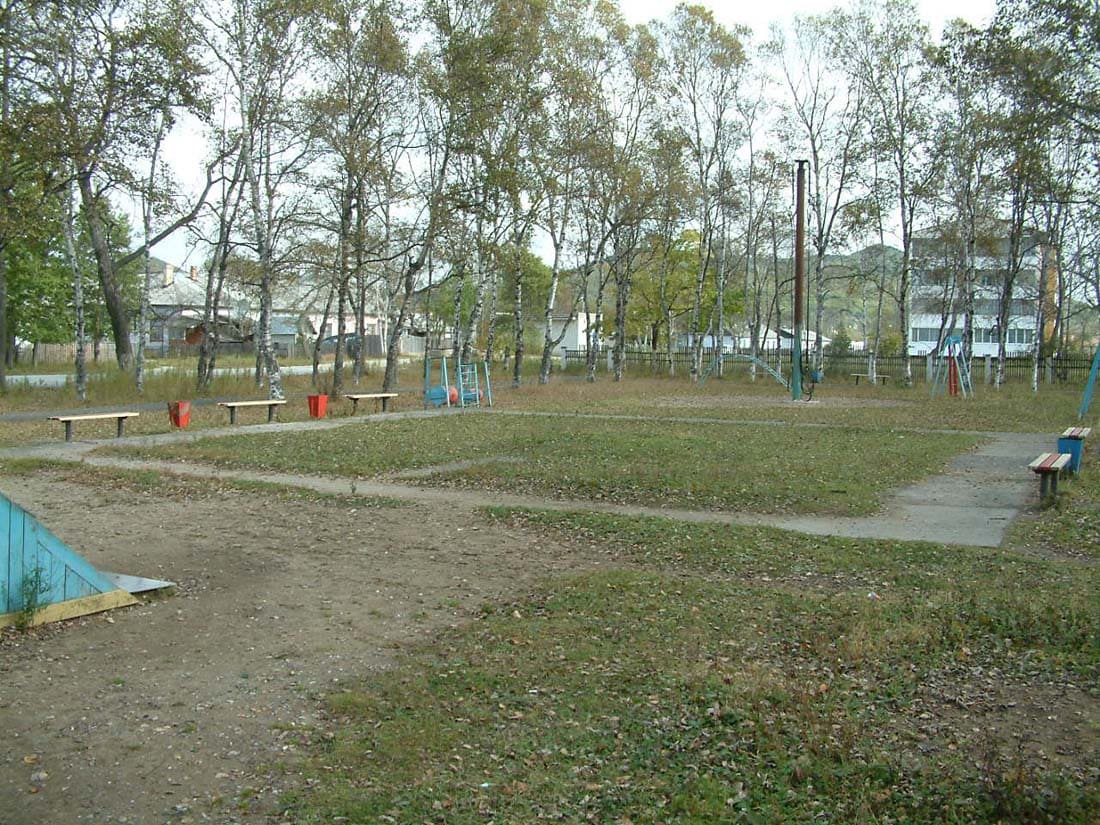
Medical monitoring
The medical monitoring of children for blood lead levels was conducted by Dalnegorsk hospital with assistance and coordination by the Far Eastern Environmental Health Fund. The test kits necessary for the analysis were regularly bought in the US and mailed to Dalnegorsk. Such monitoring made it possible to assess the problem of lead poisoning and monitor the progress.
In October 2007 the project team conducted a workshop for nurses and pediatricians to provide information on preventing lead poisoning and ways of treating lead poisoned children. Most of doctors and nurses were genuinely interested in the subject and were provided the blood lead screening results for the purposes of further monitoring of children with elevated blood lead levels.

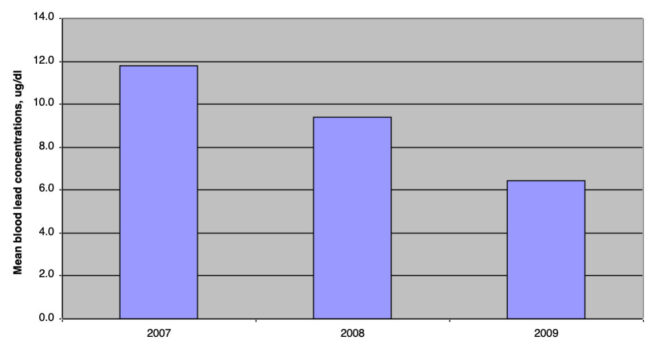
The decrease of blood lead levels is very noticeable on a group of children that were tested every year from 2007 through 2009 in Dalnegorsk. This group in 2007 had mean blood lead level 11.8 ug/dl, in 2008 – 9.4 ug/dl, and in 2009 – 6.4 ug/dl.
Conclusion
The project is a good example of an initiative to mitigate risks of lead poisoning of children. It included all necessary components for such efforts: environmental monitoring, working with government and stakeholders, planning and implementing soil remediation, conducting awareness and education activities, and medical monitoring of children. The project team planned and implemented activities using international expertise and experience of similar actions in the US, particularly the Bunker Hill Superfund Site, cleaned up by Terragraphics Environmental Engineering.
As a result of the project the lead health risks have decreased significantly. At the same time only the playgrounds of some schools and kindergartens were cleaned up. The big parts of residential areas in Dalnegorsk and Rudnaya Pristan remain contaminated. The project was stopped because of the lack of resources. These activities must be continued by the government in order to solve the problem completely.
